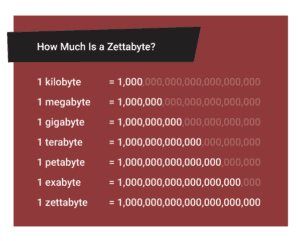Data is everywhere; you can find it in companies in every industry at every scale. Data-driven organizations are leveraging data to drive business outcomes and better serve customers.
Think about this: a sunny, 75-degree day and Walmart’s berry display, or Disney’s MyMagic and a churro stand.
At first glance, the correlation of these seemingly disparate items is unclear. But look a little closer, and the relationships become crystal clear.
These industry giants represent just two examples of companies that successfully leverage data to make better decisions. These decisions result in:
- Better products
- Better customer experience
- Better revenue
Big Data Analytics
Early adopters of big-data analytics have proven the benefits of leveraging information. Companies with the most advanced analytics capabilities outperform their competitors by wide margins. They are twice as likely to be in the top quartile of financial performance within their industries, according to survey results from management consulting firm Bain & Company.
They’re also five times as likely to make decisions faster than market peers and three times as likely to execute decisions as intended.
“For companies that do it right, data is a way to learn who customers are, what they want and what motivates them to either stick around or go to a competitor,” said Philip Alexander, CEO of Pragmatic Institute. “Insights-driven companies are using this constant feedback to build better products—and it’s giving them a competitive edge. Here’s the reality: 80% of all customer data is wasted. It’s completely unused. We made the decision to get into the data business to help product leaders get a better understanding of the rich repository of information available to them—and show them how to use that information to deliver better business results. But achieving this requires a fundamental shift in how product managers relate to and interact with data.”
Pulling Back the Layers
Ninety percent of the world’s data was created in the past two years, and that pace is accelerating. Gone are the days when gigabytes were enough to measure information. Today, we are creating zettabytes of data. Considering that:
- On average, people send about 500 million tweets per day
- Walmart processes 1 million customer transactions per hour
- Amazon sells 600 items per second—and makes recommendations based on these purchases
All of this is behavioral data that reveals what consumers want. It represents a shift away from products that drive user behavior to user behavior that drives products.
It aligns with Pragmatic Rule No. 1: An outside-in approach increases the likelihood of product success. It also offers new avenues for gathering information apart from traditional customer surveys.
To make this shift, everyone in the company—not just data scientists—must dig into and leverage behavioral data. Data delivers new value by delivering deeper insights into customers, partners and the business overall. This helps organizations:
- Answer key questions
- Make better decisions
- Build products customers love
Let’s dive into the Walmart and Disney scenarios to see this value in action.
Walmart has learned that knowing when it’s going to rain, snow or hail offers an opportunity to deliver hyper-focused advertising—but not just for obvious products like umbrellas or rain boots. Data patterns revealed something more inconspicuous: when the weather is clear and sunny with a high of around 75 degrees, blueberries, blackberries and raspberries tend to sell well. But as the temperature creeps to 80 degrees, salads sell better.
In the case of Disney, the mass media and entertainment conglomerate wanted to answer one simple question: what would make the park experience more enjoyable? A team of researchers, analysts and innovation consultants worked to uncover a laundry list of friction points, and this, in turn, resulted in a five-year, $1 billion undertaking.
The result: the MyMagic program, which produced the iconic MagicBand wristband with radio frequency identification (RFID) technology.
With the simple wave of a wrist, visitors can enter theme parks, unlock hotel-room doors, buy meals and merchandise, and skip the wait on rides. For its part, Disney has continued collecting data on visitors’ behaviors, allowing the company to see patterns.
For example, a churro stand across the theme park may be seeing increased traffic around 8 p.m. As a result, Disney may move that stand closer to where evening foot traffic flows, thus driving convenience—and sales.
“These companies are leveraging users’ behavioral data as a direct line of communication to inform business decisions,” Alexander said.
Peering into the Future
Headline after headline tells us that technology is replacing jobs. And yes, while some jobs will go away, it’s important to remember that new jobs will take their place. The challenge is acquiring the right skills to succeed in these new roles.
AI can’t create, conceptualize or manage complex strategic planning. It can’t interact with empathy and compassion—yet. To close the gap a new kind of product manager is evolving—the data product manager. The data product manager understands that building products with data requires strategy. It isn’t enough to collect data and stash it in a data warehouse so you can analyze it later. If that’s what you do, all of your efforts will have been nothing more than an academic exercise
Along with an understanding of data and data science, data product managers:
- Have a plan for how data generated by a product will be used to improve the product over time and why this creates the product’s chances of long-term success
- Understand the technological infrastructure involved in building products and know the type of framework needed to support products
- Take on the role of translating requirements among data scientists, engineers, designers, marketers and other product managers
- Build product instrumentation and data storage into their acceptance criteria while collaborating with data scientists to ensure that data is accessible and usable for analysis and modeling
Finally, and perhaps most importantly, data product managers know that data and its models and outputs aren’t enough—they still must be product managers who tie these components back to the business model and their organization’s strategy.
“Machine-learning models that don’t align with the business model not only waste time and money, they also undermine the organization’s trust in machine learning,” Phil said. “This is especially true in companies that are late to data science, are skeptical about the power of data science or have a very qualitative leadership approach.”
Looking Product in the Eye
Product managers sit on the front line in the battle to beat their industry competitors and the battle is no different from a career perspective. It is crucial that tomorrow’s product managers use metrics and analytics to influence new product development.
Innovative products come from finding gaps—this has been and will continue to be true. It’s the “how” behind exposing those gaps that is changing.
And that’s where big data and metrics come into the picture for exploring new user behavior, forms of churn and triggers for bottom-line costs. All of this will reinforce:
- The business’ value proposition
- Gain traction with stakeholders
- Optimize existing products
Remember, though, to measure the right metrics. What you choose to measure and analyze depends on your company’s size and industry—not to mention your product.
“Most successful products are built on a foundation of data,” Phil said. “And innovation isn’t born from nothing; it’s fueled by market insights and it’s measurable. But understanding those insights goes beyond comprehending the results of experiments or reading dashboards. It requires a deep appreciation of what is possible and what will soon be possible by taking full advantage of the flow of data and applying it to our daily work.”
Continue Learning
Use data to power business strategy. Our two practical, in-depth courses are designed to build expertise within data teams and a stronger collaboration with stakeholders.
Business-Driven Data Analysis
Understanding the stakeholders’ needs and solving problems with insights is critical for data professionals. Business-Driven Data Analysis teaches a proven and repeatable approach to deliver timely data analysis with actionable insights.
Data Science for Business Leaders
Business leaders need to know what problems they are able to solve with data and how to leverage the findings to make better decisions. Data Science for Business Leaders shows how to partner with data practitioners to make informed decisions and solve problems.
Authors
-

Tianhui "Michael" Li, a seasoned data scientist with 22 years of experience, has left an indelible mark at NASA, Intel, Google, Bloomberg, and more. As a 2X entrepreneur, he has contributed to the tech landscape with roles at Andreessen Horowitz, Foursquare, and Cornell Tech. Michael's expertise extends to The Wall Street Journal, VentureBeat, Harvard Business Review, The Data Incubator, and Pragmatic Institute. For questions or inquiries, please contact [email protected].
View all posts -

Amy Graham, a professional with 21 years of experience in product management and operations leadership, excels in extracting business requirements from complex processes. Having contributed to companies like Work Options Group, Bright Horizons, and Pragmatic Institute, Amy is adept at creating efficient, market-driven business solutions. For questions or inquiries, please contact [email protected].
View all posts









